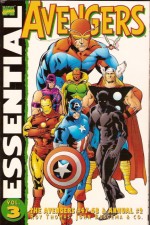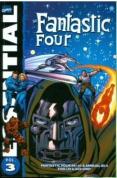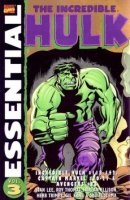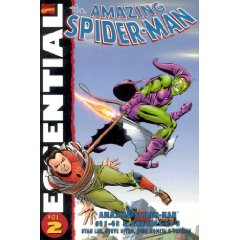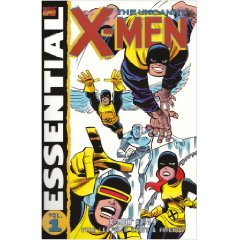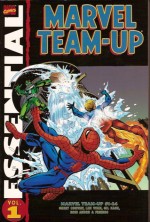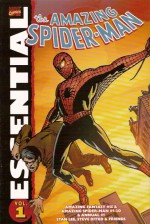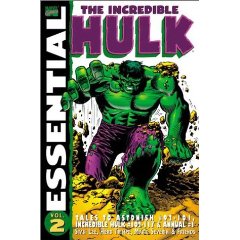
By Doug Moench, Herb Trimpe & various (Marvel)
ISBN: 978-0-7851-2153-4
What’s big and green and leaves your front room a complete mess? No, not a Christmas tree, but (arguably) the world’s most famous monster. In 1976 manga and anime were only starting to creep into global consciousness and the most well known popular culture Japanese export was a colossal radioactive dinosaur that regularly rampaged through the East destroying cities and fighting monsters even more bizarre and scary than it was.
At this time Marvel was well on the way to becoming the multi-media corporate giant of today and was looking to increase its international profile. Comic companies have always sought licensed properties to bolster their market share and in 1977 Marvel truly landed the big one with a two year run of one of the world’s most recognisable characters. They boldly broke with tradition by dropping him solidly into real-time contemporary company continuity.
Gojira first appeared in the eponymous 1954 anti-war, anti-nuke parable directed by Ishiro Honda for Toho Films; a symbol of ancient forces roused to violent reaction by mankind’s incessant meddling. The film was re-cut and dubbed into English with a young Raymond Burr inserted for US audience appeal, and the brobdignagian beast renamed Godzilla. He has smashed his way through 27 further Japanese movies, records, books games, many, many comics and is the originator of the manga sub-genre Daikaijû (giant strange beasts).
The Marvel interpretation began with ‘The Coming!’ by Doug Moench, Herb Trimpe & Jim Mooney (#1 August 1977) as the monstrous aquatic lizard with radioactive fire breath erupted out of the Pacific Ocean and rampaged through Alaska.
Superspy organisation S.H.I.E.L.D. is quickly dispatched to stop the monster, and Nick Fury calls in Japanese experts Dr. Yuriko Takiguchi, his grandson Robert and their eye-candy assistant Tamara Hashioka. After an inconclusive battle of ancient strength against modern tech Godzilla returns to the sea, but the seeds have been sown and everybody knows he will return.
In Japan many believe that Godzilla is a benevolent force destined to oppose true evil, young Robert among them, and he gets the chance to expound his views in #2’s ‘Thunder in the Darkness!’ (inked by Frank Giacoia and George Tuska) as the monolithic saurian resurfaces in Seattle, and nearly razes the place before being lured away by S.H.I.E.L.D. ingenuity.
Veteran agents Dum-Dum Dugan, Gabe Jones and Jimmy Woo are seconded to a permanent anti-lizard force until the beast is finally vanquished, but there are lots of free-lance do-gooders in the Marvel universe and when the Green Goliath takes offence at San Francisco’s Golden Gate Bridge, the Champions – a short-lived team consisting of Angel, Iceman, Ghost Rider, Black Widow and Hercules – in ‘A Tale of Two Saviours’ (with the solids inks of Tony DeZuniga adding a welcome depth to the art) the humans spend more time fighting each other than the monster.
There’re only so many cities even the angriest dinosaur can trash before tedium sets in so writer Moench begins his first continued story in #4 with ‘Godzilla Versus Batragon!’ (guest-pencilled by the superb Tom Sutton, inked by DeZuniga), wherein deranged scientist Dr. Demonicus enslaves Aleutian Islanders to grow his own world-wrecking giant horrors – until the real thing shows up…
The story concludes in ‘The Isle of Lost Monsters’ (inked by a fresh-faced Klaus Janson) and #6, ‘A Monster Enslaved!’ begins another extended epic as Herb Trimpe returns and Godzilla as well as the general American public were introduced to another now common Japanese innovation.
Giant, piloted battle-suits (Mecha) first appeared in Go Nagai’s 1972 manga classic Mazinger Z, (and Marvel would do much to popularise the sub-genre in their follow-up licensed comic Shogun Warriors, based on an import toy rather than movie or comic characters but by the same creative team as Godzilla), and here young Rob Takiguchi steals S.H.I.E.L.D.’s latest weapon, a giant robot codenamed Red Ronin, to aid the Big Guy when he is finally captured.
Fred Kida stirringly inked the first of a long line of saurian sagas with #7’s ‘Birth of a Warrior!’ and the uneasy giant’s alliance ends in another huge fight in the final chapter ‘Titan Time Two!’ ‘The Fate of Las Vegas’ (Trimpe and Kida) in Godzilla #9 is a lighter morality tale as the monster destroys Boulder Dam and floods the modern Sodom and Gomorrah, but it’s soon back to big beastie bashing in ‘Godzilla vs Yetrigar’, another multi-part mash-up that concludes in ‘Arena for Three!’ as Red Ronin returns to tackle both large lizard and stupendous Sasquatch.
The first year ends with #12’s ‘The Beta-Beast!’, the first chapter in an invasion epic. Shanghaied to the Moon, Godzilla is co-opted as a soldier in a war between alien races who breed giant monsters as weapons, and when the battle transfers to Earth in ‘The Mega-Monsters from Beyond!’, Red Ronin joins the fray for the blockbusting conclusion ‘The Super-Beasts’ (this last inked by Dan Green). Afterwards, loose in cowboy country, Godzilla stomps into a rustling mystery and modern showdown in ‘Roam on the Range’ and ‘The Great Godzilla Roundup!’ before the final story arc begins.
‘Of Lizards, Great and Small’ in #17 begins with a logical solution to the beast’s rampages as superhero Ant-Man’s shrinking gas is used to reduce Godzilla to a more manageable size, but when the diminished devastator escapes from his cage and becomes a ‘Fugitive in Manhattan!’ it’s all hands on deck whilst the city waits for the gas’ effects to wear off. ‘With Dugan on the Docks!’ sees the secret agent battle the saurian on more or less equal terms before the Fantastic Four step in for ‘A Night at the Museum.’
The FF have another humane solution and dispatch Godzilla to an age of dinosaurs in #21’s ‘The Doom Trip!’, which allows every big beast fan’s dream to come true as the King of the Monsters teams up with Jack “King†Kirby’s uniquely splendid Devil Dinosaur – and Moon Boy – in ‘The Devil and the Dinosaur!’ (inked by Jack Abel) before returning to the 20th century and his full size for a spectacular battle against the Mighty Avengers in ‘The King Once More’.
The story and series concluded in #24 (July 1979) with the remarkably satisfying ‘And Lo, a Child Shall Lead Them’ as all New York’s superheroes prove less effective than an impassioned plea, and Godzilla departs for new conquests and other licensed outlets.
By no means award-winners or critical masterpieces these stories are nonetheless a perfect example of what comics should be: enticing, exciting, accessible and brimming with “bang for your buck.†Moench’s oft-times florid prose and dialogue meld perfectly here with Trimpe’s stylised interpretation, which often surpasses the artist’s excellent work on that other big, green galoot.
These are great tales to bring the young and disaffected back to the comics fold and are well worth their space on any fan’s bookshelf.
© 1977, 1978, 1979, 2006 Toho Co., Inc. All Rights Reserved. Godzilla, King of the Monsters ® Toho Co., Inc.

